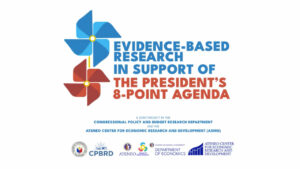Jobless rate eases to 6-month low in May

By Mariedel Irish U. Catilogo, Researcher
The Philippines’ unemployment rate in May eased to 4.3% as more Filipinos found employment, the Philippine Statistics Authority (PSA) said on Friday.
Preliminary results from the May round of the Labor Force Survey (LFS) by the statistics agency showed a slower pace of unemployment rate compared to the previous month (4.5%) and the same period last year (6%).
The number of unemployed Filipinos decreased by 89,000 to 2.17 million compared to the previous month, and by 760,000 compared to a year ago.
May recorded the lowest jobless rate since November 2022 (4.2%).
Since the start of the year, the unemployment rate averaged 4.6%, slower compared to the 6.1% in the same period last year.
The underemployment rate, which represents the proportion of individuals already employed but still seeking additional work or longer working hours, decreased to 11.7% in that month. This is slower than the 12.9% in the previous month and the 14.5% in May 2022.
As a result, there were 5.66 million Filipinos looking for additional employment or longer working hours, a decrease of 543,000 from April’s 6.20 million.
On a yearly basis, this represented a decline of 1.01 million compared to 6.67 million underemployed Filipino workers.
May’s underemployment rate was the lowest since the 11.2% recorded in March. Year to date, the average underemployment rate was 12.5%.
“Establishing an enabling regulatory environment to improve the ease of doing business and promote innovation remains a top priority in attracting investors with the technology and resources to create high-quality jobs,” said Arsenio M. Balisacan, secretary of the National Economic and Development Authority.
The labor force size in May increased by 114,000 from the previous month, reaching 50.43 million. It also grew by 1.42 million compared to last year’s 49.01 million.
As a result, the labor force participation rate (LFPR), which represents the proportion of the working-age population (15 years old and over) that is part of the total labor force, stood at 65.3%. This was higher than the 65.1% in the previous month and the 64% in the same period last year.
This marks the highest LFPR since March when it reached 66%. Year to date, the average LFPR was 65.5%.
PSA Undersecretary and National Statistician Claire Dennis S. Mapa described the annual increase in employment as “substantial,” with both the employment rate and the number of employed individuals showing positive results.
In May, the employment rate, which represents the proportion of the employed population to the total working force, rose to 95.7%. This marked an improvement from 95.5% in April and 94% in May 2022.
On a monthly basis, around 202,000 individuals were added to the employed Filipinos, bringing the total to 48.26 million in May.
Furthermore, approximately 2.18 million Filipinos joined the workforce compared to last year’s figure of 46.08 million.
The employment rate in May was the highest since November 2022 when it reached 95.8%.
For the first five months, employment averaged 95.4%.
By sector, services remained the top employer in May with an employment rate of 58.8%, followed by agriculture and industry at 24.3% and 16.9%, respectively.
Month on month, higher employment was observed in agriculture and forestry (up 810,000); fishing and aquaculture (up 372,000); arts, entertainment, and recreation (up 162,000); other service activities (up 124,000); and accommodation and food service activities (up 53,000).
Meanwhile, month-on-month job losses were seen in administrative and support service activities (down 367,000); education (down 152,000); information and communication (down 99,000); and human health and social work activities (down 78,000).
The wholesale and retail trade; repair of motor vehicles and motorcycles experienced the largest job losses, totaling 577,000 in May.
“We are observing a shift in the workforce away from retail trade and towards other sectors now that the economy is much more open in 2023 compared to 2022… We have noticed a sustained expansion in manufacturing activity, which is possibly where the labor force has shifted,” said Nicholas Antonio T. Mapa, senior economist at ING Bank N.V. Manila, in an email.
In May, an employed Filipino worked an average of 39.3 hours per week, higher than the 36.9 hours in the previous month but lower compared to the 39.8 hours in the same period last year.
“The improved labor data for May can be attributed to several factors, including decent economic growth despite inflation and high interest rates, as businesses hire more workers to meet the demand for goods and services. This is a result of confidence in economic conditions, leading organizations to likely invest and expand their operations,” said Robert Dan J. Roces, chief economist at Security Bank Corp., in an email.
Mr. Roces also said that job losses within the agriculture and fishing industries are expected due to the onset of El Niño in the country.
The Philippine Atmospheric, Geophysical, and Astronomical Services Administration (PAGASA) has forecasted the possibility of El Niño starting in June and lasting until the first quarter of 2024.
According to Josua T. Mata, secretary-general of Sentro ng mga Nagkakaisa at Progresibong Manggagawa (SENTRO), despite the country’s improved labor data, the quality of jobs remains the biggest issue.
“We in SENTRO are calling for a robust public employment program that would help achieve full employment. Such a program is necessary, especially considering the expected severity of El Niño,” Mr. Mata said in a text message.




